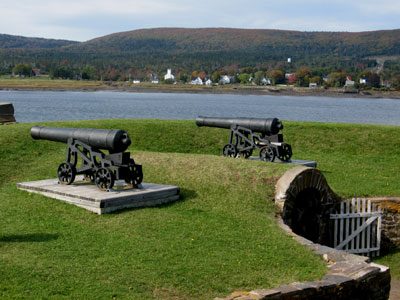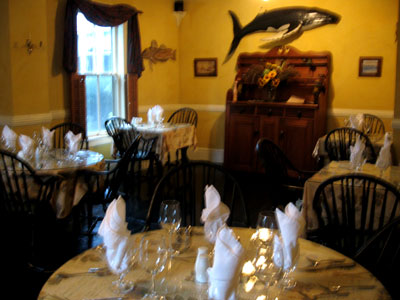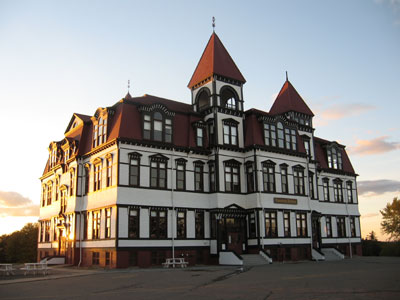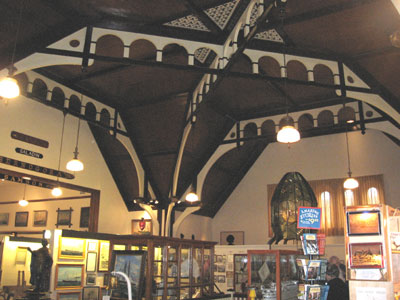Fort Anne, the main attraction in the heart of the town, was built by the British to protect the mouth of the Annapolis River and this was my first stop. I went into the visitor’s office at Fort Anne and was greeted by Alan Melanson, a 9th generation Acadian and a senior guide at this Parks Canada property. When I told him who I was looking for, he mentioned that my destination was actually the Port-Royal National Historic Site which was located on the other side of the river. I had obviously gotten the names Annapolis Royal, Fort Anne and Port-Royal confused and had showed up at the wrong place for my guided tour. That wasn’t a problem, though, since Alan indicated that his twin brother, Wayne Melanson, is a senior guide at Port-Royal and he would simply make a phone call to the other location to advise his twin brother of my arrival later this afternoon.

The De Dons Monument overlooks the Annapolis River
I would have a chance to meet Alan again later tonight to participate in the famous Annapolis Royal Candlelight Graveyard Tour which Alan would lead at about 9 pm this evening. So with my appointment set at Port-Royal for later this afternoon, I decided to park the car and explore the town on foot. I walked down Lower St. George Street past the Town Hall, the Lighthouse which dates back to 1889 and heritage buildings such as the Sinclair Inn Museum – a National Historic Site, the Adams-Ritchie House and the Old Post Office.

Timeout for a late lunch at the Streetscape Café
I came back up through Church Street and admired all the colourful wooden clapboard houses. One thing about Nova Scotia architecture is the decorative paint trim work that always stands out as a special touch. Since my busy travel schedule had so far kept me from having lunch, I stopped off at the Streetscape Café, a cozy local place where I had a delicious vegetable puree soup, followed by some vanilla biscotti. It was the perfect place to read up on the local brochures and tourist information I had picked up. Appropriately strengthened I was ready to continue my discoveries of Annapolis Royal.

The historic Court House
Just a few steps up the street right in front of Fort Anne is the Garrison Graveyard which was originally a French Catholic Graveyard from 1636 to 1710 and is the last resting place of about 2000 early residents. Right across from Fort Anne and the Graveyard was my bed and breakfast for the night, the Garrison House, which I would have a chance to explore a little later this afternoon after my visit to the Port-Royal Historic Site. I continued my stroll past Fort Anne on Upper St. George Street towards the Court House. Built in 1837, it is the oldest court house in the province still in use. An enormous old French willow tree at the Court House lane used to serve as the whipping tree where minor crimes were punished in public.

The Garrison Graveyard with Fort Anne in the background
Just a few steps further on Upper St. George Street are the Annapolis Royal Historic Gardens – a full ten acres of horticultural beauty that just celebrated their 25th anniversary. I entered the gardens through the well-stocked gift shop and started my explorations of various display gardens, dykes and marshland areas. A stunning Victorian garden illustrates the horticultural styles of days past. An Acadian House (“la Maison Acadienne”) is also located on the property and showcases tools and utensils used by the early French settlers. Although it was already early October, many of the garden areas still provided colourful displays of flowers and during the summer the Historic Gardens also feature a café with hot and cold refreshments.

Arbor at the Historic Gardens
My brief walking tour through Annapolis Royal had given me a great introduction to a beautiful and very historic town and I was ready to discover even more history at the Port-Royal National Historic Site.

Another view of the beautiful Historic Gardens




